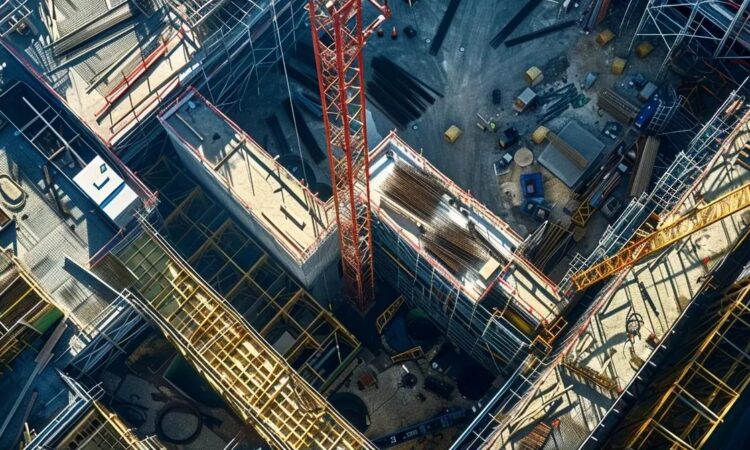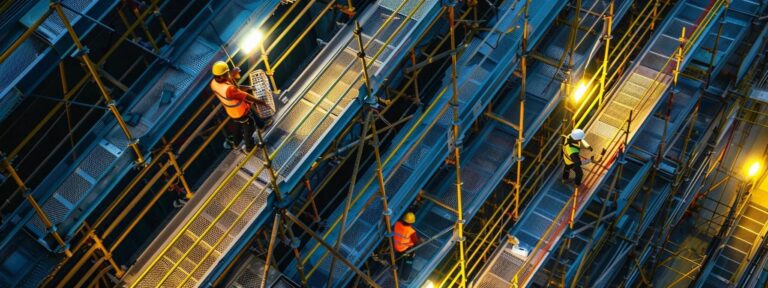Roof Edge Protection Systems: Fall Restraint vs Personal Fall Arrest
Roof Edge Protection Essentials: Fall Restraint vs Fall Arrest
Understanding roof edge protection (design-installation) begins with distinguishing between fall restraint systems—which keep workers confined to safe areas away from hazardous edges—and personal fall arrest systems lifeline-systems, which intervene if a fall occurs. Fall restraint uses fixed lines, guardrails, and designated work zones to prevent exposure to danger, whereas personal fall arrest systems rely on harnesses, lanyards, and roof anchors (ladder systems) to stop a fall in progress. Both protect against injury but differ in approach: the former prevents reaching the hazard, while the latter stops a fall if prevention fails. adhering to us fall protection best practices ensures optimal safety measures in all instances. For example, a fall restraint might involve a permanent guardrail systems on a metal roof, while a travel restraint system using a shock-absorbing lanyard provides backup when workers move around. Recent studies indicate that combining these techniques may reduce incidents by up to 40%. For more insights, visit our blog. To learn more about us, please check our about us page. Careful selection based on risk assessment and annual-maintenance is essential for job tasks ranging from residential renovations in wisconsin to industrial roofing in kansas. For project planning, get a free quote.
Understanding Fall Restraint Systems for Preventing Access to Fall Hazards
Fall restraint systems use fixed lines, ladder systems, guardrails, guardrail systems, and barriers to restrict movement towards roof edges, ensuring workers remain within safe zones. This method, common on flat roofs and structures with defined perimeters, often incorporates durable anchor points with proper design-installation and continuous lines, lifeline-systems being a critical component. In fact, many companies even let you get a free quote before beginning any work to ensure all measures are clearly understood. In practice, a worker tethered to a roof anchor cannot exceed a preset hazard zone. Safety audits, coupled with annual-maintenance, have shown that properly implemented fall restraint systems can reduce fall incidents by as much as 85%, making them a valuable component in both administrative controls and portable fall protection for various industries, including us fall protection. For more insights, feel free to visit our blog and about us page.
Understanding Personal Fall Arrest Systems for Stopping Falls in Progress
Personal fall arrest systems are engineered as part of a design-installation approach to safely halt a fall once it begins. These systems consist of a full-body harness, shock-absorbing lanyard, lifeline-systems, ladder systems, and secure anchor points. Designed to meet OSHA and ANSI standards, they absorb and disperse kinetic energy to reduce injury severity—shock-absorbing lanyards, for instance, can lower impact force by up to 50%. Such systems are vital on roofs where rigid restraint, such as guardrail systems, is impractical, allowing flexible movement while still safeguarding the worker. Whether on a metal roof in mississippi or a wood-roofed structure in oklahoma, personal fall arrest provides essential backup and reinforces the importance of annual-maintenance for long-term safety. For more information, please visit our about us page or check out our blog, and to get a free quote on installation and maintenance, please reach out to us fall protection.
Critical Differences in Application and Functionality of Restraint and Arrest Gear
The primary difference between these systems is prevention versus intervention. Fall restraint systems, such as guardrail systems, create a physical barrier to keep workers away from edges, which is ideal for simpler roof layouts. In addition, ladder systems may also be installed to ensure safe access when working at heights. In contrast, fall arrest systems, often integrated with lifeline-systems, act after a fall begins and are preferable for complex or dynamic work environments where mobility is required; proper design-installation of these systems is essential for optimizing performance. In many cases, simultaneous use of both methods maximizes safety, and regular annual-maintenance checks are recommended. For instance, on a flat roof in ohio, if a fall restraint barrier fails, the fall arrest system immediately engages, providing a critical secondary layer of protection. For further insights, visit our blog and get a free quote from us fall protection experts. To learn more, check out our about us page for additional details about our approach.
How General Roof Edge Protection Systems Complement Personal Safety Measures
General roof edge protection systems, including guard rails (guardrail systems) and parapets, offer a passive layer that complements both fall restraint and fall arrest systems and ladder systems. These structural elements prevent casual missteps and work in tandem with active safety measures. When properly installed through design-installation practices, a guard rail can reduce potential fall distances and improve overall compliance with safety regulations. Combined with portable fall protection equipment and integrated lifeline-systems, these systems fortify the overall protection strategy, ensuring improved worker confidence and adherence to regulatory standards. Regular annual-maintenance further preserves the long-term effectiveness of the system. For more information, visit our blog, check out our about us page, and get a free quote from us fall protection.
Designing Integrated Roof Edge Protection for Optimal Worker Safety
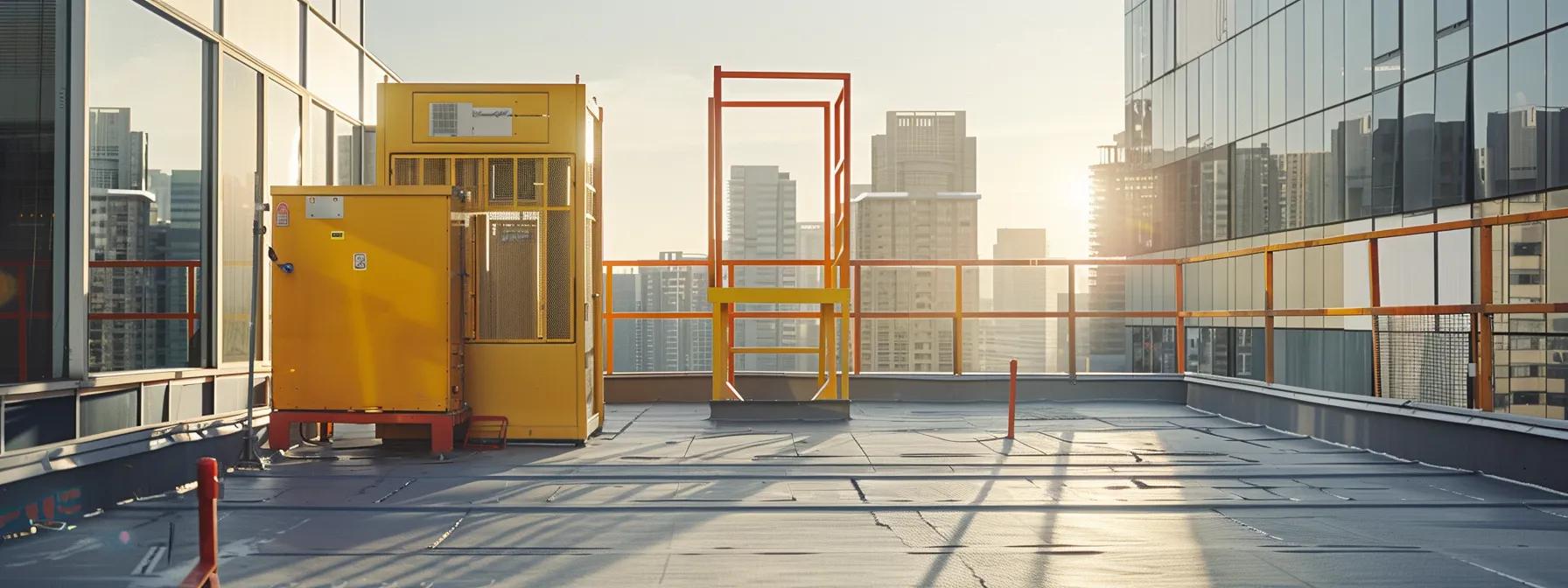
Designing an integrated roof edge protection system requires a thorough assessment of the work environment and a strategic blend of protective measures, such as ladder systems, incorporating a design-installation approach that addresses both planning and execution. For more detailed insights, visit our blog to learn about us and the latest advancements in safety. The optimal design combines fall restraint, personal fall arrest, and roof edge protection systems, along with lifeline-systems and guardrail systems, to create a multilayered safety net. This approach ensures that if one layer fails, additional safeguards—including provisions for annual-maintenance and us fall protection—are in place to prevent injury. To take the next step toward enhanced safety, get a free quote today.
Assessing Roof Work Areas to Determine Combined System Requirements
The initial step is a detailed assessment of the roof, identifying fall hazards and critical zones, with careful consideration given to ladder systems for safe access. To learn more, our about us section explains our process and highlights expertise from us fall protection. This involves measuring clear fall distances, evaluating roof angles, and pinpointing access areas, often using laser measurement tools and safety audit checklists as part of the design-installation process. For example, roofs with multiple skylights may require specialized restraint lines alongside nearby anchor points for arrest systems and lifeline-systems. Detailed hazard mapping and risk assessment, whether on a flat roof in pennsylvania or a pitched roof in indiana, allow for quantitatively monitoring improvements over time, ensuring that annual-maintenance plans incorporate guardrail systems where necessary. For additional insights and project updates, visit our blog and get a free quote to discuss your next project.
Principles for Blending Restraint and Personal Fall Arrest System Capabilities
Seamless integration and design-installation calls for both systems to work without interfering with each other. For more information about us, please visit our blog to get a free quote on our services. Anchorage points for personal fall arrest must be placed near, but not too close to, fall restraint barriers and in line with us fall protection guidelines to avoid compromising effectiveness. Both systems should share compatible load and dynamic response ratings, ensuring lifeline-systems compliance. Visualize a multi-tiered defense where a fixed guardrail systems, travel restraint system, and personal safety harness integrated with ladder systems form a coherent protection network for workers on roofs ranging from the united kingdom to maryland, with provisions for annual-maintenance.
Achieving Comprehensive Safety Through Layered Roof Edge Protection Strategies
A layered safety strategy uses overlapping systems like ladder systems and lifeline-systems to address different failure modes, ensuring us fall protection at every stage. One proven method in design-installation is a safety matrix that maps out each layer’s function and its contribution to safety improvement, integrating guardrail systems and annual-maintenance practices for consistent performance. For more detailed insights, check our blog and explore the about us section, or get a free quote from our experts.
| Protection Layer | Key Function | Example Component | Safety Improvement (%) |
|---|---|---|---|
| Fall Restraint System | Prevents access to hazards | Fixed tethers, guardrails | Up to 85% reduction |
| Personal Fall Arrest System | Arrests falls in progress | Harness, lanyard, anchors | Up to 50% impact reduction |
| Roof Edge Protection | Provides passive protection | Parapets, guardrails | Enhances overall safety |
This integrated matrix aids in compliance management and demonstrates robust protection for diverse roofing projects in states like utah, oregon, and delaware.
Practical Examples of Combined Fall Restraint and Personal Fall Arrest Setups
In practice, commercial flat roofs may utilize a fall restraint system with a continuous lifeline (lifeline-systems) employing expert design-installation techniques, attached to fixed anchor points along the edge, while each worker also wears a personal fall arrest harness attached to a secondary anchorage in the roof’s center. In renovation projects on pitched roofs, mobile fall restraint tethers complement fixed guardrails (guardrail systems), and routine annual-maintenance procedures, along with integrated ladder systems for safe access, help ensure the integrity of these systems. These dual systems have been successfully implemented in various settings—from industrial construction in nebraska to maintenance work in alabama—leading to notable improvements in safety performance and a reduction in fall-related incidents as recognized by leading us fall protection specialists. For more detailed insights and updates, please visit our blog. To learn more about our background, visit our about us page, and if you’re ready to enhance your safety measures, get a free quote today.
Mastering Personal Fall Arrest Systems for Reliable Fall Stoppage
Mastering personal fall arrest systems entails a deep understanding of their components, including lifeline-systems, ladder systems, and guardrail systems, and proper usage. Regular inspection, annual-maintenance, and correct connection methods, as seen in design-installation, ensure these systems perform reliably when needed to protect the worker’s life during a fall. Trusted by us fall protection experts, this approach is elaborated in our blog, offering further insights and practical tips. To learn more about us and to get a free quote, please explore our additional resources.
Core Components of Effective Personal Fall Arrest Systems
A typical system includes a full-body harness, shock-absorbing lanyard, and reliable anchor point. Additional connectors like carabiners, lifeline-systems, and ladder systems may also be used. The design-installation of each component ensures they withstand high dynamic forces; for example, harnesses are tested to support forces up to 5,000 pounds, suggesting annual-maintenance is crucial. Meeting industry standards set by OSHA and ANSI is critical, ensuring that all elements—from wire rope systems to energy-absorbing lanyards and guardrail systems—perform effectively under stress. For more details, please visit about us. Also, check our blog to get a free quote from us fall protection experts.
Proper Harness Fitting and Connection Techniques for Personal Fall Arrest Gear
A well-fitted harness (us fall protection) should be snug yet comfortable to distribute fall forces evenly across the body. In addition, proper design-installation of the equipment ensures that every component functions as intended. Correct strap adjustment minimizes unwanted movement and prevents suspension trauma, ensuring compatibility with ladder systems. Securely attaching the lanyard to the D-ring on the back is essential, ensuring that lifeline-systems connections lock properly to prevent disengagement. Routine training sessions and practice drills are recommended—especially for handling guardrail systems—to ensure workers master these critical techniques, whether in construction sites in kansas or industrial settings in virginia. Furthermore, periodic annual-maintenance checks are crucial for long-term safety. For more insights and solutions, visit our blog and about us page to get a free quote on advanced safety systems.
Anchorage Considerations for Personal Fall Arrest System Integrity
The anchorage point must support the combined load from the worker and the forces generated during a fall for us fall protection. In many situations, ladder systems are integrated to facilitate emergency evacuations. This involves using structural beams (design-installation), dedicated posts, or engineered anchors designed for high load capacities—at least 5,000 pounds per OSHA guidelines (us fall protection). Environmental factors, such as wind load on a metal roof or corrosion on a wood structure, must be considered when selecting and maintaining anchor points, including annual-maintenance protocols. Additionally, guardrail systems and lifeline-systems further enhance overall safety. For more detailed insights, visit our blog to get a free quote and learn more about us.
Calculating Required Fall Distances Accurately for Personal Fall Arrest Systems
Proper calculation of fall clearance distances is crucial for us fall protection compliance. Employers must consider the lanyard length, the deceleration distance provided by the shock absorber, and the worker’s height in ladder systems applications. Typically, a minimum clearance of 6 feet above the lower surface is required, as outlined in guardrail systems guidelines, to allow the system to operate effectively without the worker striking the ground. Advanced software tools can aid in these calculations, ensuring every potential fall scenario is safely managed and supporting annual-maintenance scheduling. In addition, integrating design-installation practices with lifeline-systems can further enhance overall safety measures. For more detailed information, please visit our about us page on our blog, or get a free quote for personalized fall protection solutions.
Implementing Robust Fall Restraint Systems to Maintain Safe Work Zones
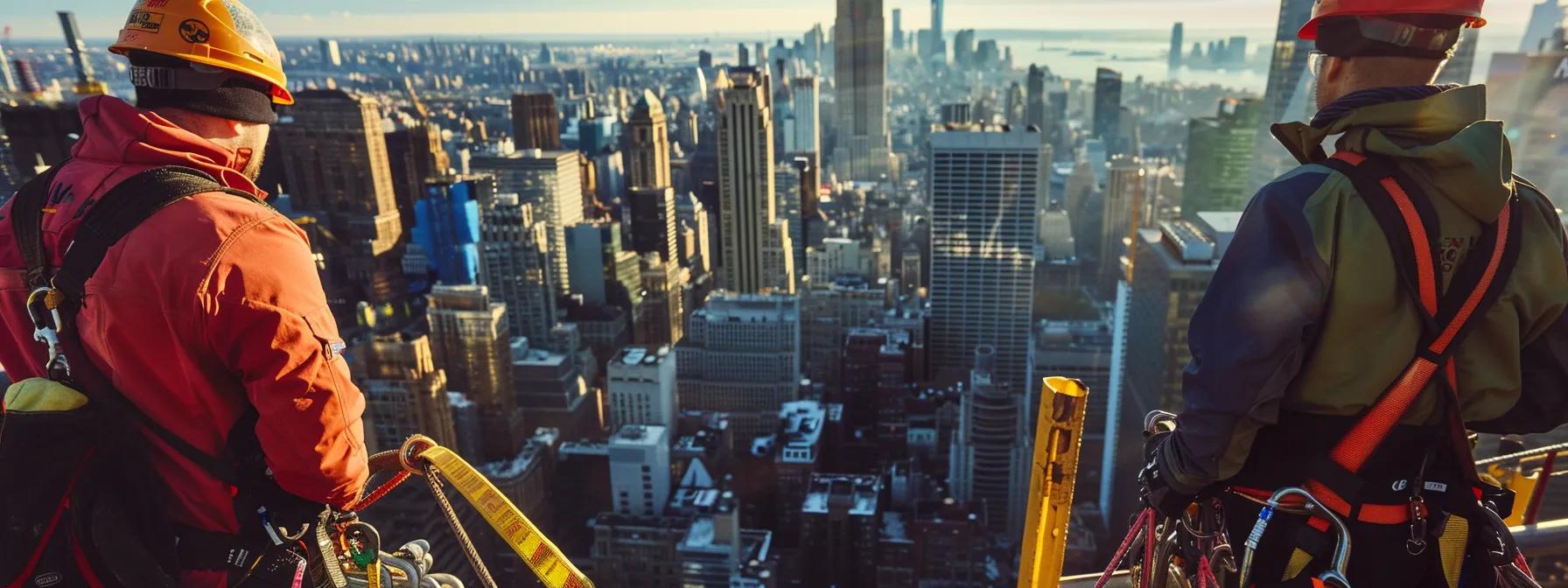
Effective fall restraint systems, supported by us fall protection and guardrail systems, create safe work zones by controlling access to roof edges. If you’re interested in learning about us and understanding our commitment to safety, our dedicated team is ready to assist. A combination of proper equipment – such as lifeline-systems and ladder systems – thorough hazard assessments, and clearly defined protocols minimizes the risk of accidental falls. For additional insights on design-installation best practices and annual-maintenance tips, visit our blog and get a free quote.
Essential Elements for Dependable Fall Restraint Operations on Roofs
Key elements include clearly defined work zones, fixed anchor points, and ongoing monitoring of system integrity, annual-maintenance considerations that ensure the system is performing optimally. Installation of barrier systems, such as guardrails or temporary fencing, when combined with design-installation best practices and ladder systems, helps delineate safe areas and supports effective guardrail systems. Additionally, designated tie-off points and harness clips, along with us fall protection strategies, ensure workers remain within secure boundaries. Electronic monitoring systems integrated with lifeline-systems can provide real‑time alerts if restraints are compromised, a useful feature in high‑risk industries across states like nebraska and maryland.
For more details about us and further safety tips, visit our blog or get a free quote on our services.
Setting Up Effective Perimeters Using Fall Restraint Systems
Perimeter setup begins with a comprehensive layout, incorporating design-installation strategies, where hazards are marked and physical barriers are installed. Mesh nets, guardrails, or painted delineation lines—often enhanced by guardrail systems—provide visual cues and physical separation from dangerous edges. Clear signage, coupled with annual-maintenance reviews and regular safety briefings, reinforces these precautions, contributing to an overall culture of safety and regulatory compliance.
Balancing Worker Mobility With Hazard Avoidance via Fall Restraint
A common challenge is ensuring workers maintain adequate mobility while staying within safe boundaries. Flexible tethering systems, such as retractable lifelines that comply with lifeline-systems standards, allow controlled movement while automatically locking when approaching hazardous zones. In contrast to ladder systems that offer static support, these dynamic solutions follow strict design-installation protocols to enhance safety. Regular annual-maintenance and adherence to us fall protection guidelines ensure that safety measures remain effective. This balance of mobility with strict perimeter controls is essential in busy work environments and large roofing operations.
Common Application Scenarios for Roof Fall Restraint Systems
Roof fall restraint systems are suited for a variety of applications, from temporary residential projects to permanent industrial installations. Residential jobs may require easily installed and removed systems, while commercial projects often demand more robust, durable solutions. Case studies demonstrate incident reduction of up to 70% when effective fall restraints are in place, underscoring their importance across diverse settings.
Meeting Safety Regulations for All Roof Edge Protection Systems
Compliance with safety regulations is fundamental for roof edge protection systems. These systems must adhere to federal and international standards, ensuring effective protection and reducing legal liabilities.
Adhering to OSHA Guidelines for Roof Fall Protection Systems
OSHA mandates that roof edge protection systems prevent falls from heights that could cause severe injury or death. This includes requirements for fall distances, anchorage strength, and the use of safety nets, guardrails, or personal fall arrest systems. Regular audits and operator training ensure that these measures meet rigorous safety standards.
Complying With ANSI Standards for Fall Restraint and Personal Fall Arrest Equipment
ANSI sets strict technical specifications for components used in fall restraint and arrest systems. These standards cover tensile strength, durability, and load testing for harnesses, lanyards, and anchorage devices. Ensuring equipment compliance not only meets regulatory requirements but also guarantees performance under real-world conditions, critical for industries ranging from construction to machine assembly.
Fulfilling Employer Duties for a Safe Roofing Environment With Appropriate Systems
Employers are legally and ethically required to provide a safe working environment. This involves conducting comprehensive risk assessments, implementing robust roof edge protection systems, and ensuring workers are thoroughly trained. Routine inspections and digital tracking of maintenance records help maintain continuous compliance and foster a strong safety culture.
Essential Training for Workers Using Combined Roof Edge Protection Systems
Effective training covers proper usage, regular inspection, and maintenance of both fall restraint and personal fall arrest systems. Workers must be able to recognize hazards, understand each system’s limitations, and know the correct emergency procedures. Regular drills and certification courses—often increasing safety performance by over 60%—are critical for ensuring worker preparedness and regulatory compliance.
Ensuring Long-Term Effectiveness of Combined Roof Safety Measures
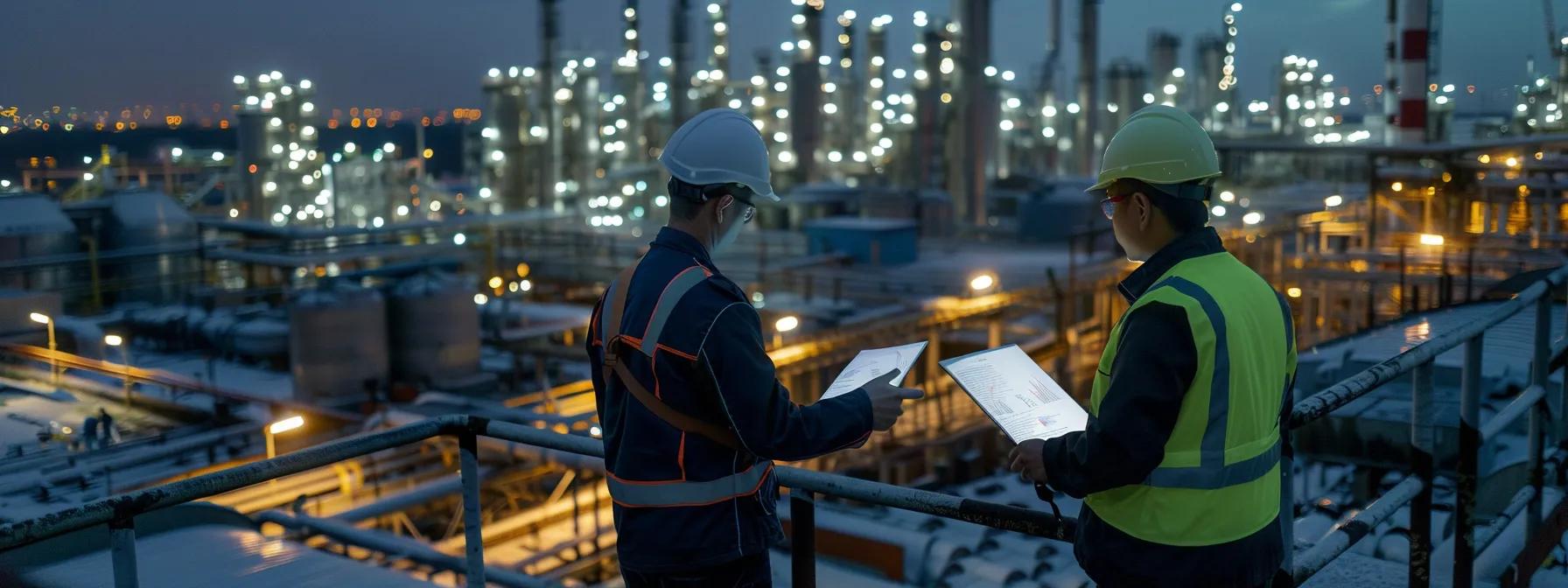
Sustaining roof safety over time requires systematic maintenance, regular inspections, rescue planning, and meticulous record-keeping. These activities are vital for ensuring that safety equipment remains reliable and effective.
Implementing Pre-Use Checks for Personal Fall Arrest Systems
Before work begins, pre-use checks verify that all components—harnesses, lanyards, anchor connectors—are in proper working condition. Standardized checklists help identify any wear or damage, reducing the risk of malfunction during a fall.
Routine Maintenance Protocols for Fall Restraint System Components
Scheduled inspections, cleaning, and timely replacement of worn components are essential for maintaining system integrity. Documenting these activities in a logbook allows for proactive maintenance and ensures compliance with manufacturer guidelines and regulatory standards.
Developing Comprehensive Rescue Plans for Personal Fall Arrest System Users
A well-developed rescue plan is critical for prompt recovery in the event of a fall. Such plans outline procedures for alerting emergency responders, safely accessing the fallen worker, and lowering them to safety. Regular drills and scenario-based training help ensure rapid response, reducing potential injury severity by up to 30%.
Record-Keeping for Inspections of Roof Edge Protection Systems and Equipment Lifespan
Effective record-keeping involves detailed logs of inspections, maintenance, and any incidents. Digital tracking systems can automate reminders and provide real-time data, ensuring that every piece of safety equipment—whether used on a steel roof in connecticut or a wood roof in north dakota—remains in optimal condition.
Frequently Asked Questions
Q: How do fall restraint systems prevent access to dangerous roof edges?
A: Fall restraint systems use fixed barriers, tethers, and defined work zones to physically restrict workers from reaching hazardous areas.
Q: What components are included in a personal fall arrest system?
A: These systems typically include a full-body harness, a shock-absorbing lanyard, secure anchorage points, and connectors such as carabiners, all designed to safely stop a fall.
Q: Which safety regulations must roof edge protection systems comply with?
A: Roof edge protection systems must meet OSHA guidelines and ANSI standards for fall protection and arrest equipment, ensuring robust performance under stress.
Q: What is the importance of pre-use checks for personal fall arrest systems?
A: Pre-use checks verify that all components are intact and functioning correctly before use, reducing the risk of equipment failure during a fall.
Q: How can employers ensure long-term effectiveness of roof safety measures?
A: Employers should implement routine maintenance, thorough record-keeping, regular inspections, and comprehensive rescue plans to ensure continuous protection.
Q: What role do guardrails play in a layered roof safety system?
A: Guardrails act as a passive safety barrier that, when combined with fall restraint and fall arrest systems, provides an extra layer of defense to protect workers near roof edges.
Final Thoughts
The integration of fall restraint and personal fall arrest systems offers a comprehensive approach to roof edge protection. By combining preventive measures with reactive safety mechanisms, employers can significantly reduce the risk of falls while ensuring that any incidents are managed effectively. With ongoing evaluation, regular inspections, and proper training, a robust roof edge protection strategy safeguards workers and assets alike, fostering a culture of safety and compliance.

